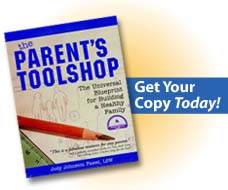First, you open a parenting magazine with an article on why “self-esteem” is important. Then you read a newspaper column that says, “Self-esteem is a crock.” Then you read two articles on the web; one says to praise your children and one says not to.
Doesn’t it irk you when so-called experts give you inaccurate or conflicting parenting advice? That’s because there are many myths about self-esteem that parents, professionals and even researchers believe.
For example, there have been numerous research studies on the importance and impact of building self-esteem in children. A December 2003 study focusing on bullies said, “bullies are psychologically strong…don’t show signs of depression or social anxiety and they don’t feel lonely…We hope that these findings help us dispel the myth that bullies suffer from low self‑esteem.”
John Rosemond, a syndicated parenting columnist, has written several articles against building self-esteem in children. One excerpt from a 1996 article says, “Some thirty years ago, ‘helping’ professionals began promoting “high self‑esteem” as the be‑all, end‑all of good mental health … which contributed to a host of social problems… and quickly mutated into self‑worship.” In another article, he says, “Gang members have high self‑esteem. So do spouse abusers. On a narcissism scale, violent criminals, long thought to be ‘acting out’ low self‑esteem, obtained a higher mean score than people in any other category.”
Does your common sense scream, “These can’t be right?” Well they aren’t! Such findings only prove these “experts” don’t know the correct definition of “self-esteem.” So here’s a lesson for parents, researchers and experts alike.
WHAT IS SELF-ESTEEM?
There are three definitions one must know before discussing the issue of self-esteem:
- “Self‑esteem” is how you feel about your inside qualities — your worth as human beings — as you judge it.
- “Self‑image” is how you think you appear to others on the outside, including whether you think you are “popular,” “pretty,” “smart,” etc., based on others’ judgements.
- “Ego‑esteem” is thinking you are (or are trying to be) better than others. These people are ego-centric, narcissistic and self-centered and build themselves up by putting others down.
Now, consider the two research findings above. What are they really talking about? If they correctly used the term “ego-esteem,” their findings make sense. Bullies build themselves up by tearing others down and scoring high on a narcissism scale indicates high “ego-esteem,” not high “self-esteem.”
Just as there are different types of esteem, there are two techniques often associated with the development of self-esteem.
Many experts tell parents the best way of building self-esteem in children is by using “praise.” The correct definition of praise is using judgmental labels that focus on pleasing others. For example, “You did a good job,” “You make me happy when you…,” “I’m so proud of you,” “You are smart,” “pretty,” etc.
With praise, the speaker judges whether the receiver is any of these things — so the receiver becomes conditioned to look to others for validation. Since praise focuses on other people’s judgments, it builds self-image, not self-esteem. If used in an exaggerated way, such as you are the prettiest, smartest, etc, it can build ego-esteem.
WHAT BUILDS SELF-ESTEEM?
You can build “self-esteem” by using “encouragement” instead, which uses descriptive words that foster internal motivation and self-evaluation. For example, “I noticed you sorted the laundry and did a load all by yourself without being asked! That really helped the family. How do you feel about the job you did?” Or “You did it! I bet you feel proud of yourself.”
Encouragement allows the receiver to judge their own work and the descriptions give them guidelines for setting standards and self-evaluating their work in the future.
There are actually twenty-five tools for building self-esteem in children, described in The Parents Toolshop book. Here is the most important one and an easy way to remember it; to build self-esteem, give people a “D.I.P.”:
- Describe what the person did, any effort, improvement or steps taken.
- Focus on the Internal qualities they showed or benefits they or others gained.
- Focus on the Positive aspects of what they did.
You can also give encouragement when someone does an imperfect job. Notice what was correct, then decide if it’s necessary to point out those shortcomings now. It’s usually best to let people enjoy their good feelings and address imperfections later.
When you do address mistakes, if you point out their mistakes, they are likely to feel defensive. Instead, if you ask questions such as, “would you do anything differently next time?” and they felt encouraged earlier, they’ll be more willing to notice areas for improvement on their own.
For example, “I notice you sorted the clothes. That’s thinking it through first!” You just pointed out the positive behavior and internal qualities. Now pause. “Did you see that one black sock that got in the whites and stained them? What can you do next time to prevent that? Do you know how to get the stains out?” These questions imply the child is capable of figuring out the problem and solution, which are internal qualities.
WHAT RESEARCH BACKS THIS?
There is now vast long-term research that shows the negative outcomes of using praise and building ego-esteem or self-image at the expense of self-esteem. Take, for example, the research done over the past ten years by Dr. Carol Dweck on self-esteem, which was featured in the chapter on “The Praise Paradox” in the book Nurture Shock, by Po Bronson and Ashley Merryman. In a nutshell, it shows that children who are told they are “smart” actually score lower on tests and are less self-motivated to improve than children whose efforts and improvement are noticed.
Why? Because if children believe they are “smart,” then it implies intelligence is something they are born with and can’t control it through efforts of their own. When given the opportunity to re-take a test, the majority of these children decline the offer. Being told one is “Smart” is praise, a judgment someone else has made that builds self-image or ego-esteem. Children whose efforts are acknowledged (encouragement, focusing on internal qualities) believe they can improve, so they are more likely to be self-motivated to try harder and the majority of these children voluntarily re-take a test.
GIVE A D.I.P. A DAY!
By using these definitions and guidelines, you can weed out inaccurate advice and avoid the pitfalls of praise and inadvertently building ego-esteem. Just remember to build self-esteem in others by giving them “a D.I.P. a day!”
******************
To learn more about building self-esteem in children, get the Lunch & Learn Audio “I’m Loveable and I Like Myself — Inside and Out!. You will get more details on using D.I.P. and discover other tools that will foster self-esteem and self-motivation in your child.
******************
Jody Johnston Pawel, LSW, CFLE is President of Parent’s Toolshop® Consulting, where she oversees an international network of Toolshop® trainers. For 30+ years, Jody has trained tens thousands of parents and family professionals worldwide through her dynamic workshops and hundreds of interviews with the media worldwide, including Parents and Working Mother magazines. Locally, she’s served as the Parenting Expert for the original Dayton Parent Magazine, Dayton Daily News’ 937-513 websites, and C o-Producer for the Emmy-nominated Ident-a-Kid television series. She is the author of the award-winning book, The Parent’s Toolshop® and countless multimedia resources that support and educate parents from diverse backgrounds, plus other adults who live or work with children. You can find them at her award-winning website, www.ParentsToolshop.com.
Reprint Guidelines: You may publish/reprint any article from our site for non-commercial purposes in your ezine, website, blog, forum, RSS feed or print publication, as long as it is the entire un-edited article and title and includes the article’s source credit, including the author’s bio and active links as they appear with the article. We also appreciate a quick note/e-mail telling us where you are reprinting the article. To request permission from the author to publish this article in print or for commercial purposes, please complete and send us a Permission to Reprint Form.
Original source of material: The Parents Toolshop® book.



